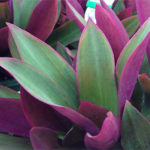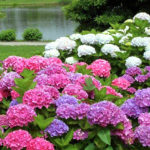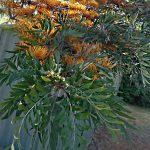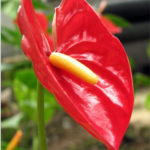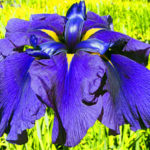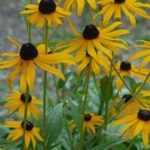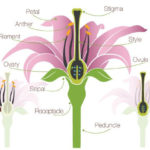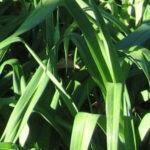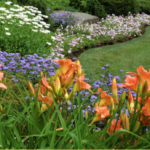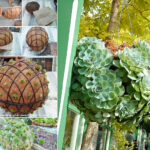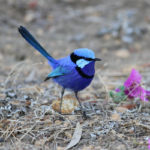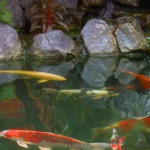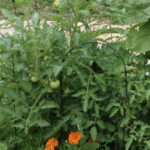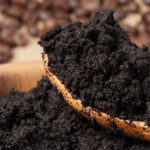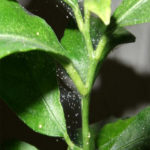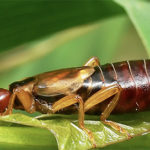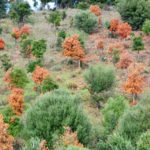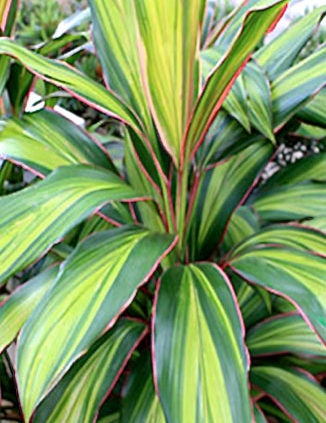
Cordylines Tropical Plants Diseases
Cordylines, Colourful Tropical Plants of Australia, Diseases and Maintenance
 The Fruticosa Cordylines are an amazing looking garden plant only found growing in the tropical frost free zones of Australia, this includes the coastal fringe and tropical areas from Cairns in Queensland to Sydney in New South Wales also from north of Perth to Geraldton in Western Australia where these ti plants will receive a true tropical climate that is high in humidity. You can see these cordylines only in Australia, New Zealand, Southern Asia, Polynesia and Hawaii grew in gardens showing off their best colours with some species native to Australia. The botanical name of the plant comes from the Greek term ‘kordyle’, which means ‘club’. It refers to the rather thick and bulky underground stems. They are really spectacular plants, besides the fruticosa cordylines leaves have a fabulous stunning range of bright colours either striped or solid colours edged with variegated margins in greens, creams, yellow, purple and bright red, orange and bright pink. Cordylines are mainly used for decorative purposes in the garden yet can be taken indoors for short periods. Although some native civilizations use them for food or medicine, today, they are more prized in the garden of plant collectors, due to their natural wild beauty. Pictured is Cordyline Kiwi.
The Fruticosa Cordylines are an amazing looking garden plant only found growing in the tropical frost free zones of Australia, this includes the coastal fringe and tropical areas from Cairns in Queensland to Sydney in New South Wales also from north of Perth to Geraldton in Western Australia where these ti plants will receive a true tropical climate that is high in humidity. You can see these cordylines only in Australia, New Zealand, Southern Asia, Polynesia and Hawaii grew in gardens showing off their best colours with some species native to Australia. The botanical name of the plant comes from the Greek term ‘kordyle’, which means ‘club’. It refers to the rather thick and bulky underground stems. They are really spectacular plants, besides the fruticosa cordylines leaves have a fabulous stunning range of bright colours either striped or solid colours edged with variegated margins in greens, creams, yellow, purple and bright red, orange and bright pink. Cordylines are mainly used for decorative purposes in the garden yet can be taken indoors for short periods. Although some native civilizations use them for food or medicine, today, they are more prized in the garden of plant collectors, due to their natural wild beauty. Pictured is Cordyline Kiwi.
Cordyline Australis is another species of cordylines, this one being a tougher heat tolerant and drought hardy variety and hardier type that grows well in cold climates. Cordyline Australis has strap type leaves, still comes in different bright colours but in short after years of growth most will form a trunk that can continue to grow up to around 50 feet in height, with the exception of a new variety Cordyline Red Fountain grows to a height of just 3 feet tall, producing burgundy strap cascading leaves makes this cordyline very popular with landscape designers.
Diseases of Cordylines Caused Through…
Even though the people who grow cordylines consider that they are robust and sturdy plants, these tropical plants do suffer from several types of diseases and might have some development problems. People all over the world, not only in Australia, love these plants due to their spectacular leaf colours. But in some conditions, these colours may appear dull or faded. You can tell something is wrong because the plant has darker colours, like purple or maroon and lack the tints of brighter colours, which are so appreciated. The phenomenon may indicate the fertiliser is applied in too high quantities, there is a lack of light, or the temperature is too high. So, you must be careful to give the plant a moderate amount of fertiliser, to put the cordylines in a shaded spot during the hot summer days and to make sure your cordyline plant receives plenty of light in the cold months of winter.
Cordylines Fluoride Poisoning
Other frequent problems of the Cordylines are fluoride poisoning. The symptoms are visible, as they involve the browning of the leaf margins, followed by withering. In severe cases, even the centre of the leaf will be affected, looking stained. To avoid this type of poisoning, fluoride poisoning be careful not to use a soil mix that contains fertilisers like superphosphate or perlite. Also, the soil must be maintained at the optimum pH levels, between 6 and 6.5, to avoid fluorides being absorbed by the plants. Also be careful about the water used for the maintenance of the plant, as it should not contain a fluoride ppm value that exceeds 0.25.
Fungal Infections of Cordylines
Fungal Infections can also be met in Cordylines. Fusarium, Phyllosticta, and Phytophthora are the funguses that specialised in attacking these sturdy plants. Fusarium produces red or tans spots on the leaves, especially the young ones. It can also cause the rotting of stem and roots. You can tell something is wrong because the base leaves are withered, the stem has brown spots right above the ground and by this time the cordyline leaves are turning yellow. Phyllosticta attacks older leaves, producing yellow spots with purple margins; these spots can be both circular and irregular. The symptoms given by Phytophthora are the presence of brown spots on the bottom leaves, which also look like being soaked in water. For all fungal infection, a fungicide must be applied to protect the healthy plants and treat the fungal infection. If a cordyline plant is too severely infected, you might need to get rid of it, to avoid spreading of the spores to the other healthy tropical plants.
Which Cordyline Suits My Climate?
There is a cordyline to suit every climate, the thin strap leaf varieties suit frost areas out in the open garden and both thin leaf and broad leaf varieties will grow in tropical areas.
Are Daylilies Tropical Plants?
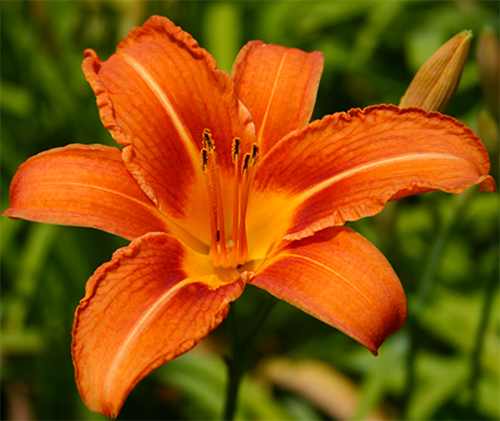
And since we are talking about tropical plants.
Are daylilies tropical plants and do daylilies grow in tropical climates?
Daylilies are not tropical plants, being native to the Eurasia region. But they are highly adaptable and can be cultivated in tropical regions, even in Australia. The Hemerocallis fulva, a daylily variety known as Tiger Daylily or Orange Daylily has been acclimatised successfully in the tropical area. But do be aware, as this type of daylily tends to be rather invasive and can spread fast if grown in quality soil conditions, this explains the success of growing this plant anywhere. Growing this daylily plant in poorer soil will avoid your garden being choked by this heirloom variety of daylily.


